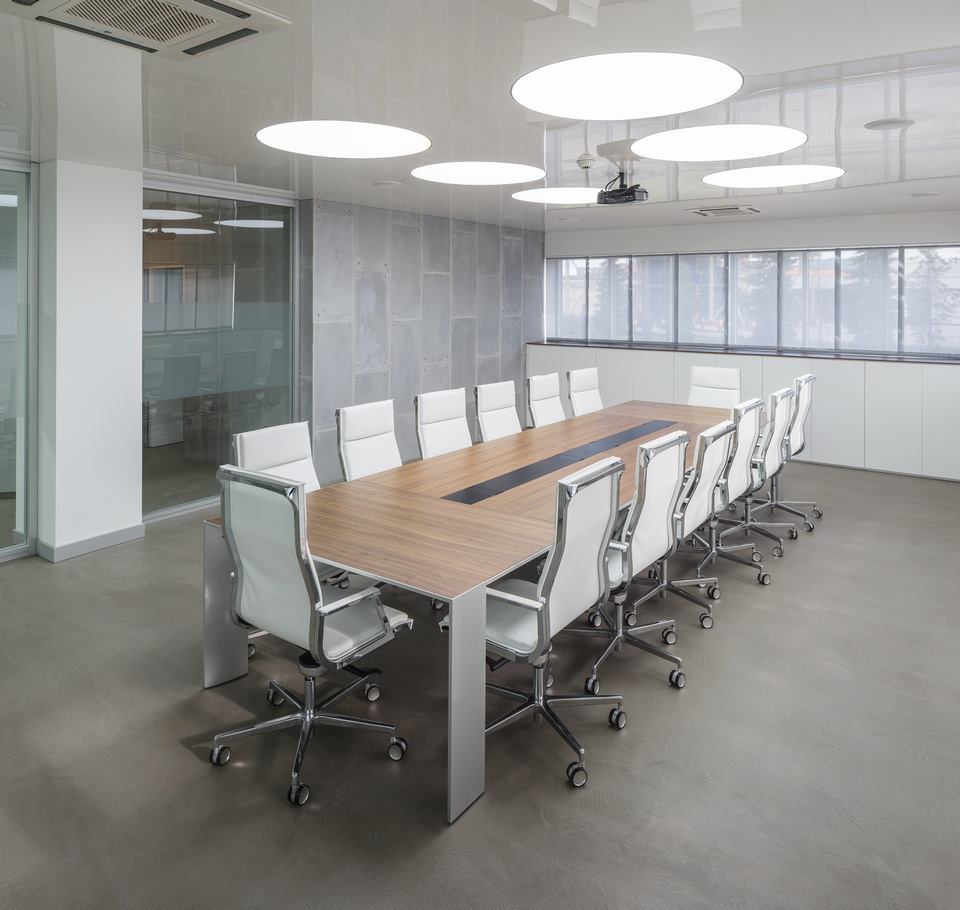
Microperforated materials help absorb reverberation over a wide frequency range and significantly improve the sound parameters of spaces where acoustic correction is needed.
All colours are also available for acoustic treatment.
Visually the perforations remain very discreet; in most cases the distance between the stretch ceiling and the viewer makes the small perforations invisible.
The plenum formed in the space between the existing ceiling and the stretch ceiling is used to create a damping volume and possibly to install a sound-absorbing material. This material can optionally be added to optimise overall sound performance.
The 3 essential factors for maximum efficiency:
1. Membrane effect
The damping effect of the membrane is achieved by resonance of the air volume in the plenum. It absorbs low frequencies.
The plenum height has a very large influence on the overall performance.
2. Perforations
Perforations absorb mid frequencies.
Their number and diameter determine the degree of absorption.
Perforations are essential in optimising the performance of adjacent absorbing materials for high frequencies.
3. Thickness of insulating material (to be added optionally)
The thickness of the adjacent absorbing material plays a role on the whole frequency range. Its density and nature have an impact on performance in the high frequency range.
VERY IMPORTANT to mention is that any acoustic comfort depends on the cumulative performance of all surfaces (windows, floor, walls, ceiling, furniture).
Thanks to the acoustic treatment, stretch ceilings provide a viable solution to compensate for the lower performance of other surfaces.

Comments are closed.